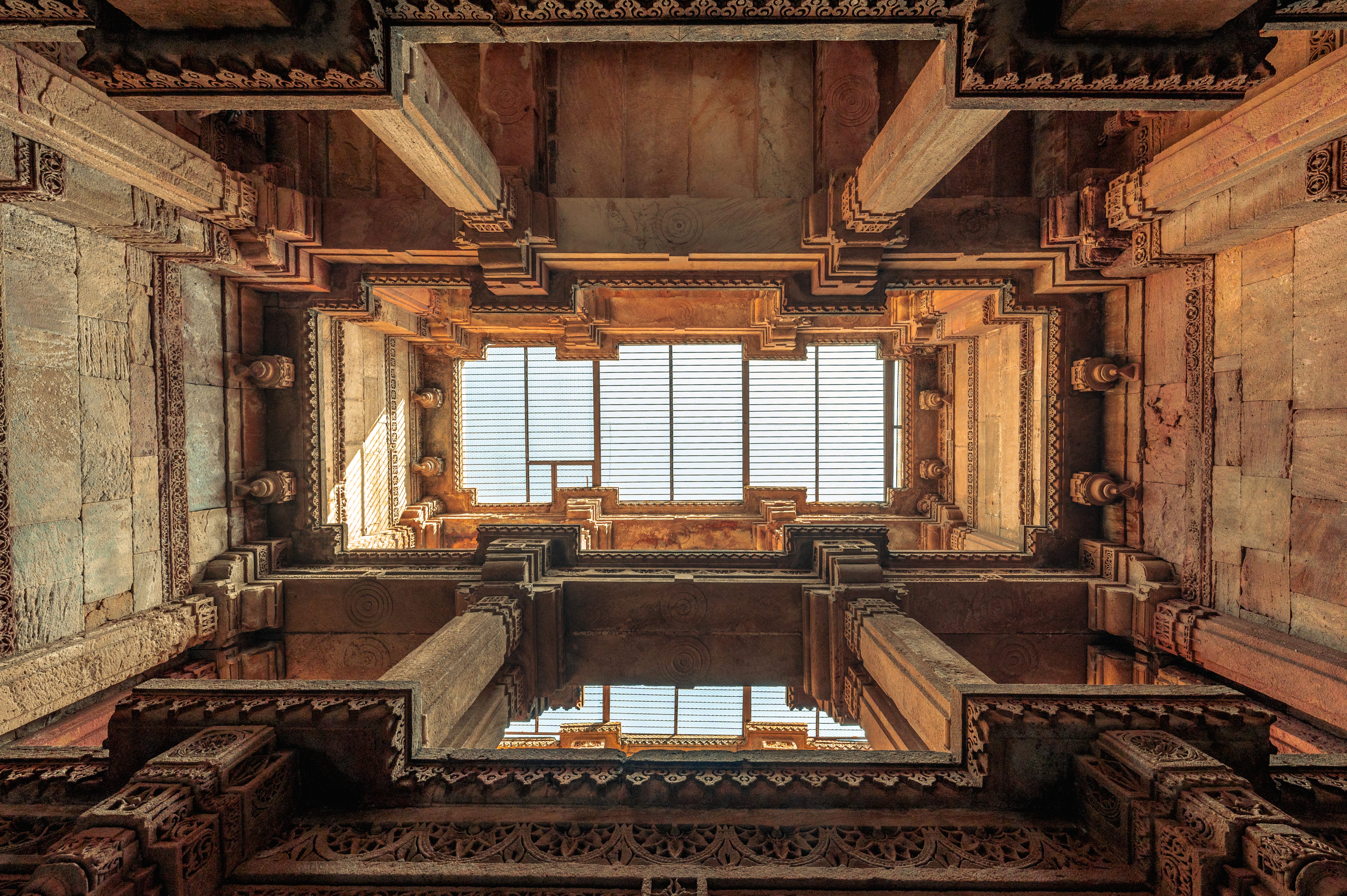
As we ticked another Indian state off our bucket list, we can’t wait to share our travel stories with you. Here’s all about 3 must-visit stepwells of Gujarat that we highly recommend to every traveler. Since we had a travel plan of 7 days, we could only visit Ahmedabad, Patan and Modhera. These stepwells are in and around these places and the beautiful architecture of the state are worth mentioning.
First things first
In Gujarat, a stepwell or baori is called vav. Wells with long stairs earned them this name. The purpose of constructing stepwells was to store water for hot summer months in arid regions of Rajasthan, M.P, Gujarat and more. Stepwells not only tackled the issue of draught but also generated employment. Among all stepwells of Gujarat, these three most beautiful ones will surely leave you awestruck.
1. Rani ki Vav
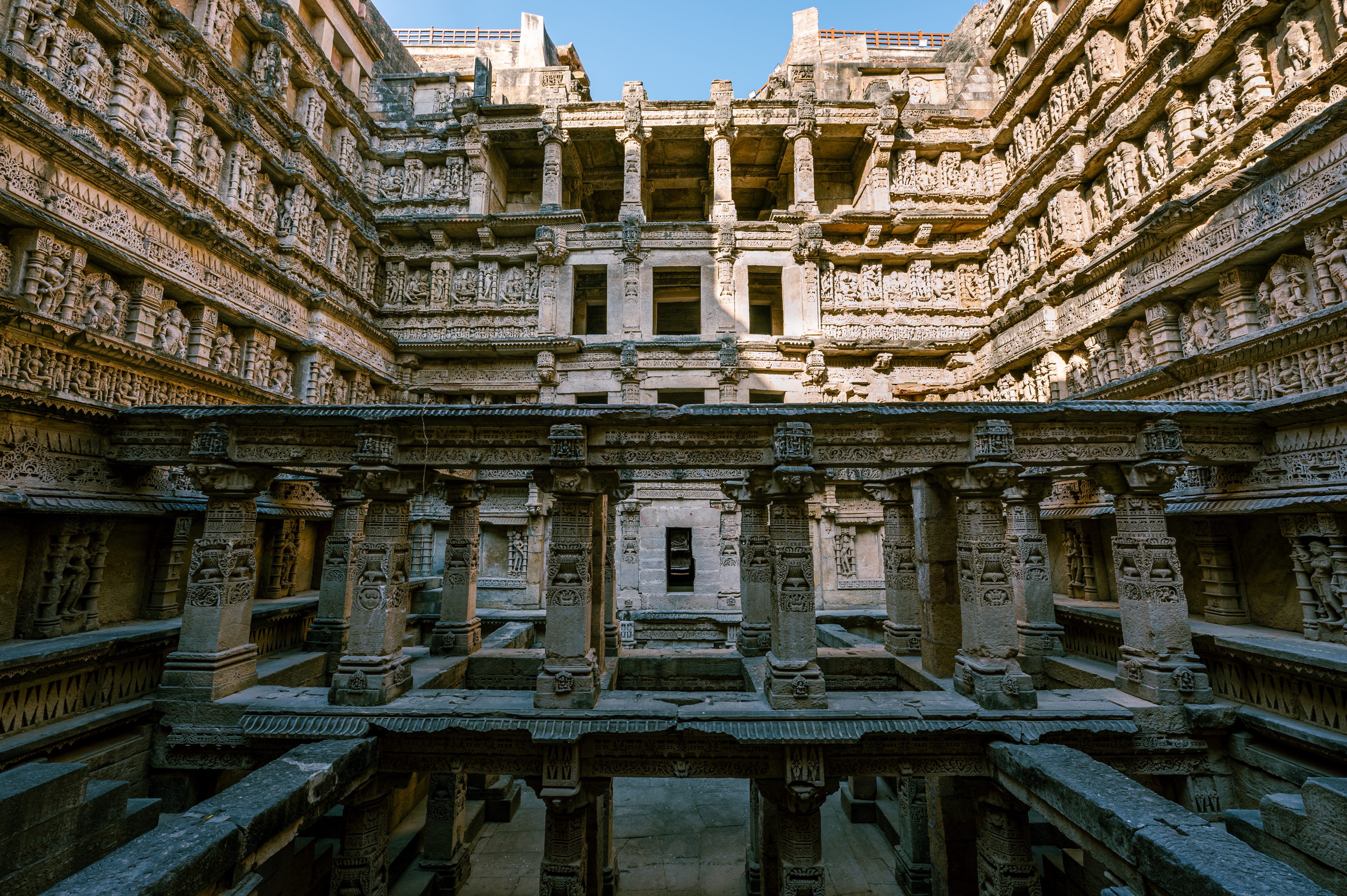
This is the most ornate and perhaps the most popular stepwell in Gujarat. The new Indian 100 Rupees currency has the picture of Rani ki vav. This stepwell made it to the list of UNESCO World Heritage site in 2014 and bagged the ‘cleanest heritage site’ in 2016. It is renowned for its intricate carvings and stunning architecture. The multi-storeyed vav was found buried under the earth assumingly after the Saraswati River was flooded. Rani ki vav was first spotted in 1890 by two archaeologists and later an excavation in 1940 revealed the massive stepwell.
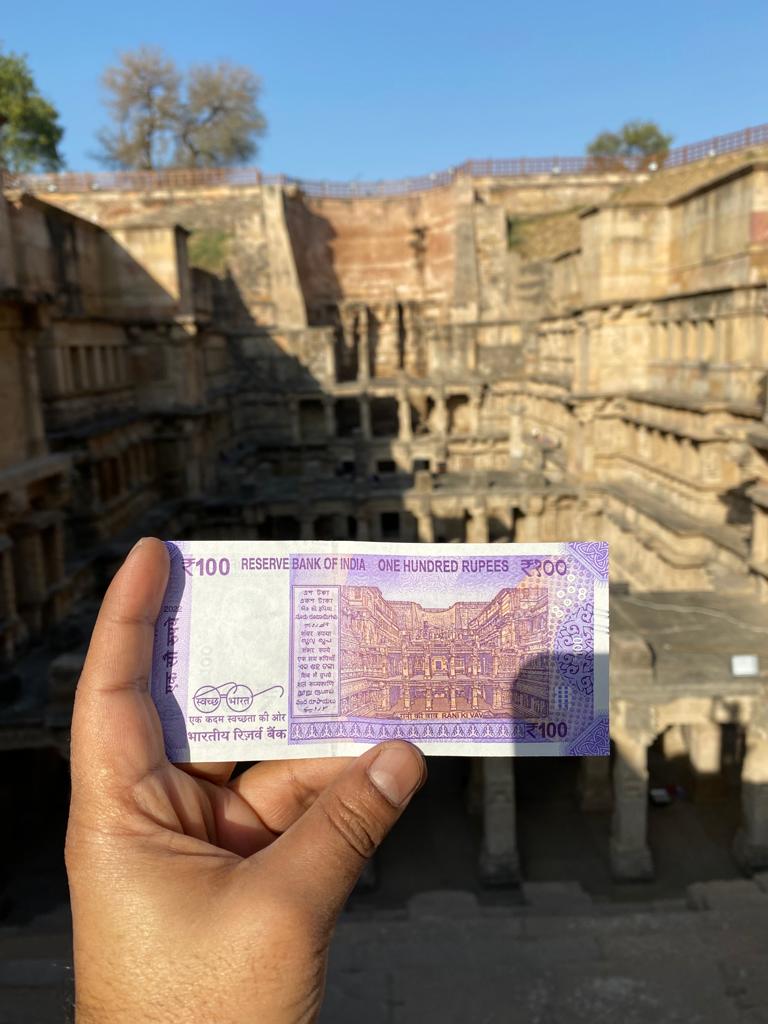
The architecture of the stepwell leaves visitors awestruck since it was a complex structure to build back in those days. The 92 feet (28 meters) stepwell has seven layers of stairs leading to a well which has dried up now. The pillars, walls and beams bear ornamental carvings and sculptors of several deities
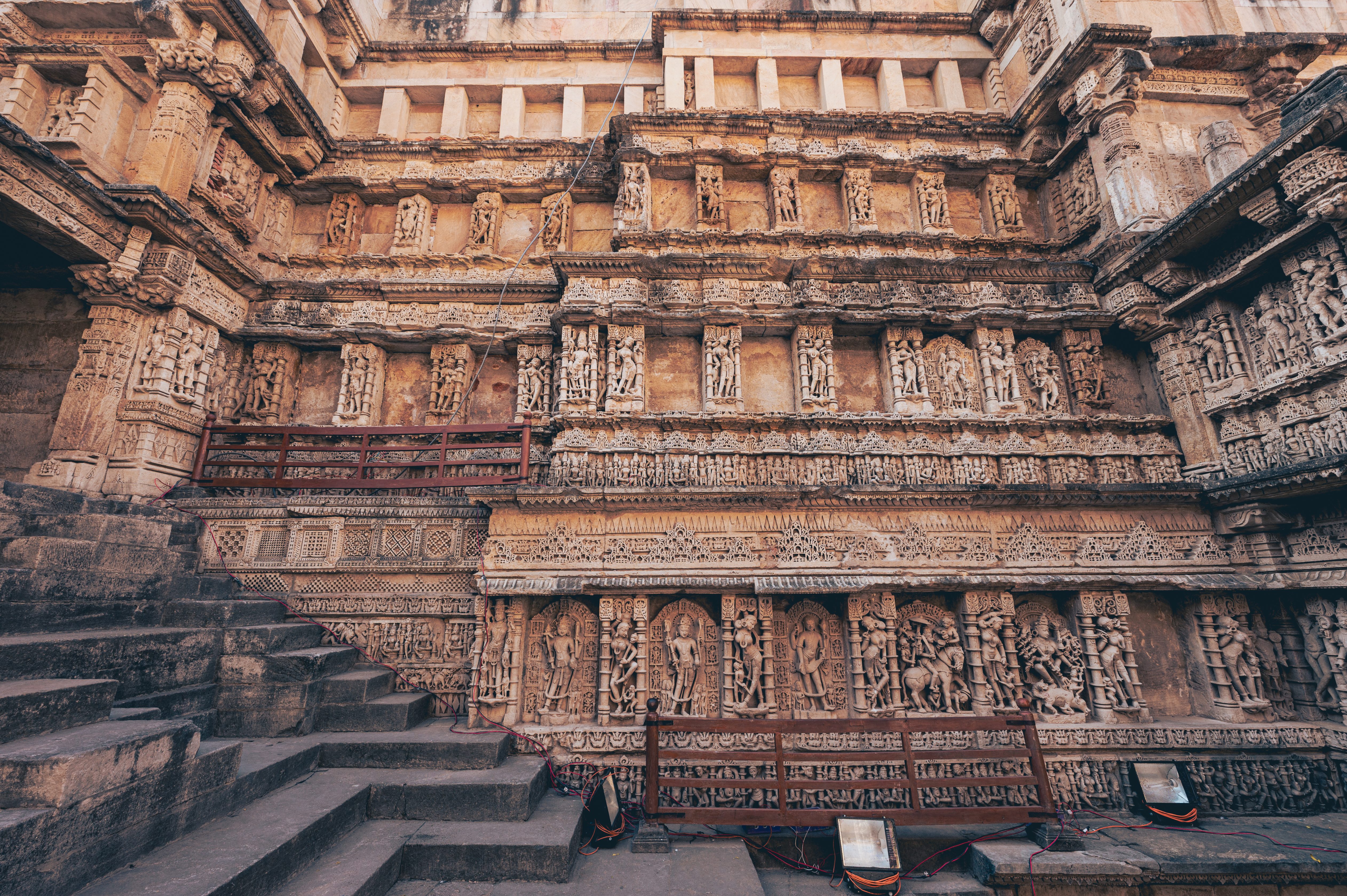
The security guards often point out at the latticework pattern and designs resembling geometric textile designs, and traditional Patola featured on the walls. The staff is friendly and often help you with taking pictures. They are geniuses with camera!
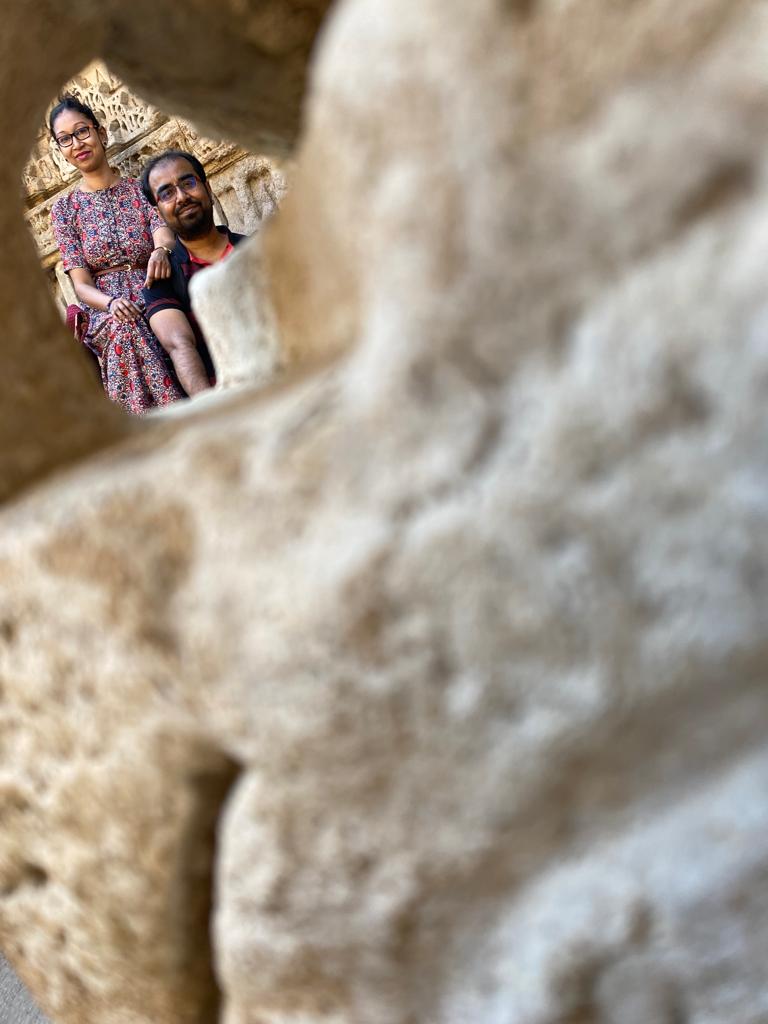
More about Rani ki vav
Where: In Patan district, 3.2 km from Patan Bus Stop. Patan is 130 km from Ahmedabad. You can board a local bus or hire a taxi from Ahmedabad to Patan.
How to reach: Hop into an auto or your designated tourist bus. No volvo or taxis ply on this route. An auto generally charges Rs 40-50 from Patan bus stop to Rani ki vav.
Entry fee: Rs 40 for Indian visitors, Rs 600 for international visitors, free for children less than 15 years of age
2. Adalaj Stepwell
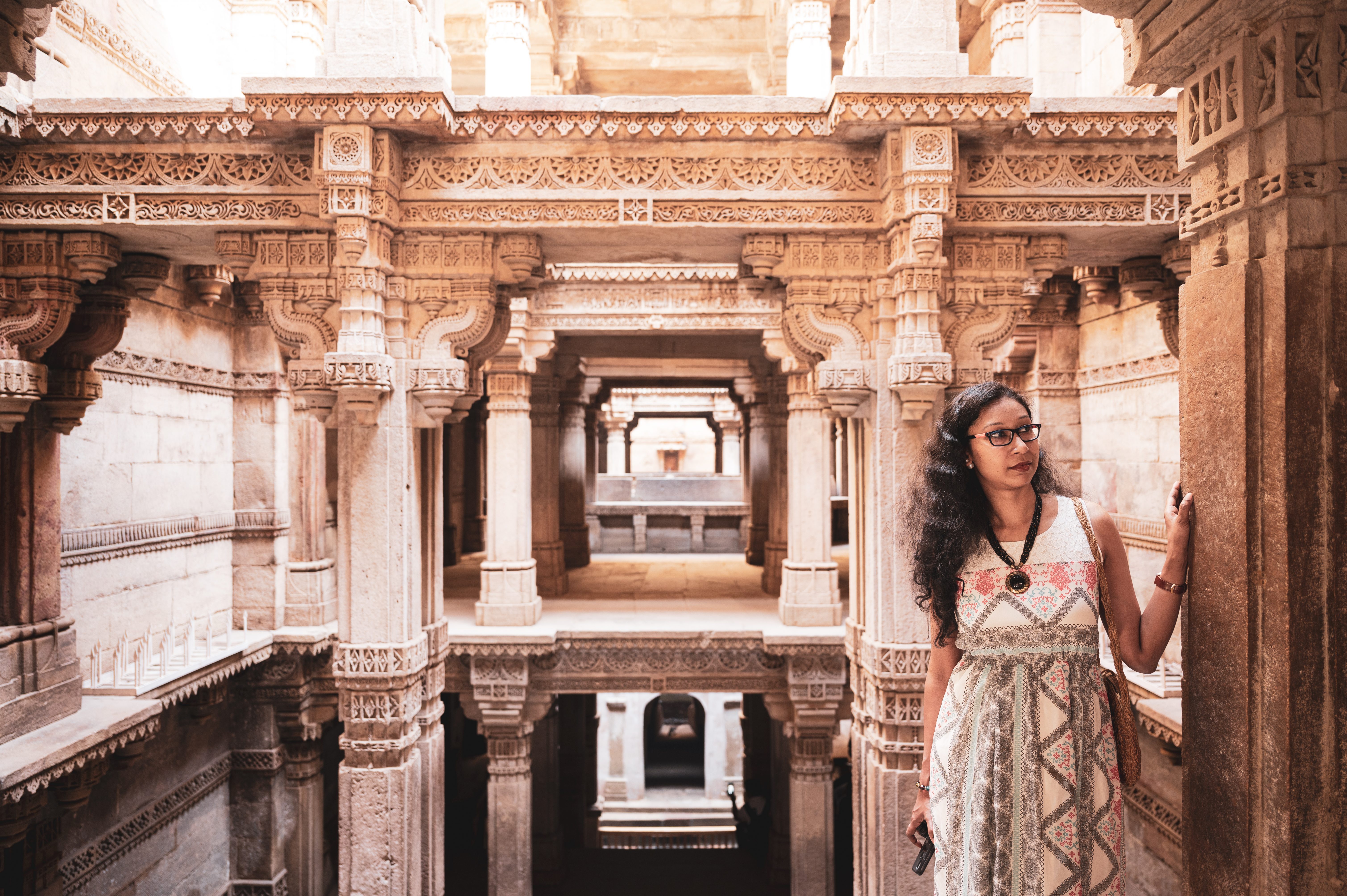
Another example of a rich architectural marvel is Adalaj Stepwel, also called Rudabai ni vav. The stepwell was commissioned by Rana Veer Singh in 1498 to tackle the water shortage in his kingdom. He was killed in an attack led by Mahmud Begda, a Muslim leader of the neighboring district. Veer Singh’s wife Rudabai wanted to perform Sati but as destiny had it, Begda was smitten by her beauty and proposed marriage to her. Rudabai accepted the proposal on the condition that he would complete the construction of the stepwell that Veer Singh had initiated. Begda agreed and finished the construction before time. The moment he reminded Rudabai of her promise, she stood on the edge of the well and jumped into it. This tragic tale of love is still revered in the history. Rudabai is worshipped as a devoted queen and the stepwell was ultimately named after her.
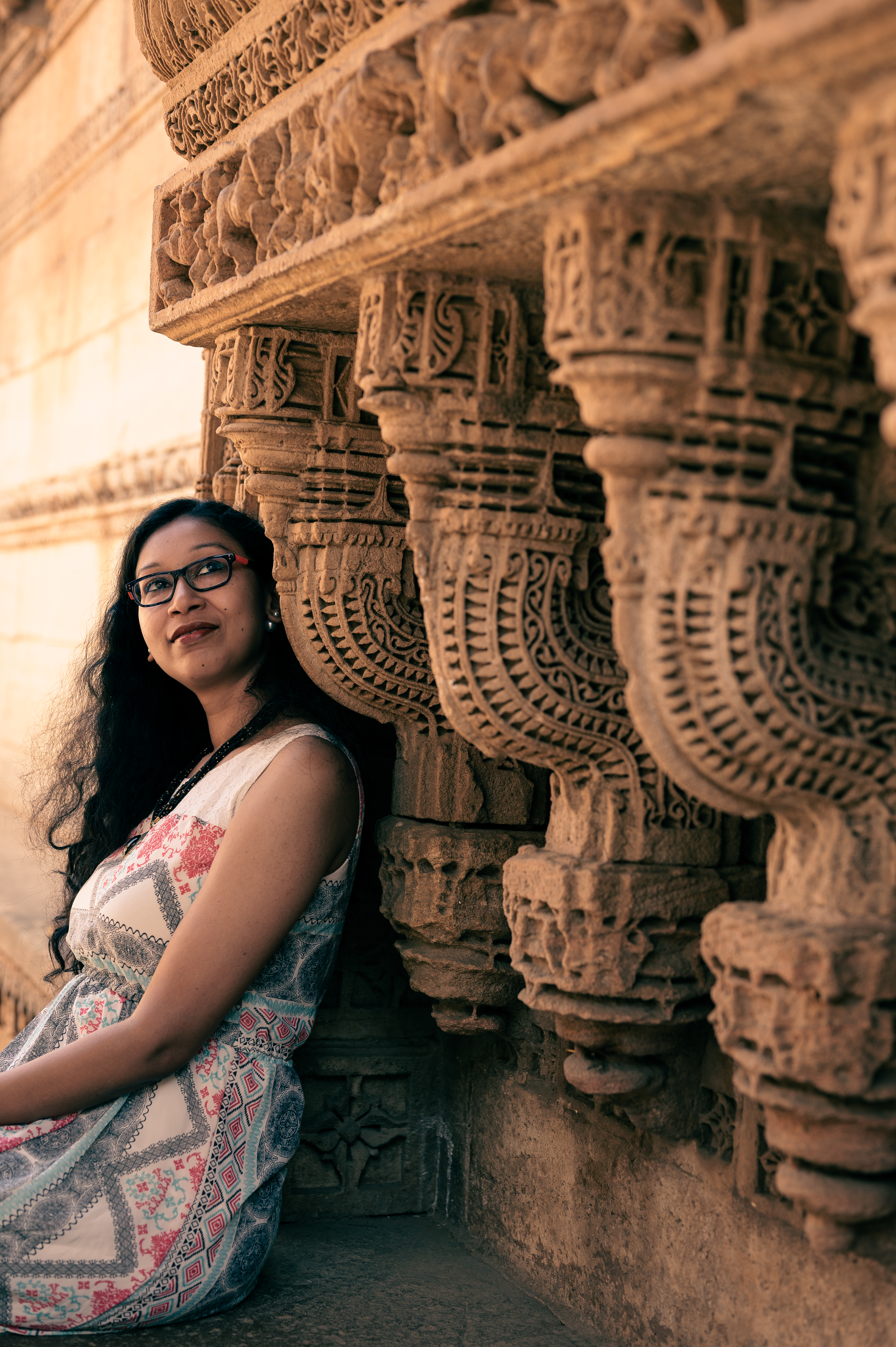
This famous stepwell of Gujarat is five levels deep and built in the Solanki architectural style. Embellished pillars support the octagonal top. Carvers have engraved several Hindu and Jain Gods on each wall and pillar in a few stories. Islamic architecture is also visible in some parts of the stepwell that were built by Mohd Begda. The temperature of the stepwell is five degree cooler than the outside temperature. This was a respite for women who would go there to fetch water and spend some worshipping gods or socializing before returning to daily household work. The well that still holds water has fence around and entry into the well has been prohibited.

More about Adalaj Stepwell
Adalaj is exemplar of brilliant architecture that has stood the test of time. We’d recommend you to not skip it as it is among the best stepwells of Gujarat. Try visiting early morning or evening since afternoons get extremely hot.
Where: In Adalaj in Gandhinagar city, 18km north of Ahmedabad and 5 km from Gandhinagar
How to reach: Hire a tourist bus if you are in a group or else take an auto rickshaw. An auto usually would charge anywhere between 120-200 from Ahmedabad, depending on the distance. Easier to reach from Gandhinagar.
Entry fee: Rs 25 for Indian visitors and Rs 300 for international tourists
3. Dai Halima Stepwell
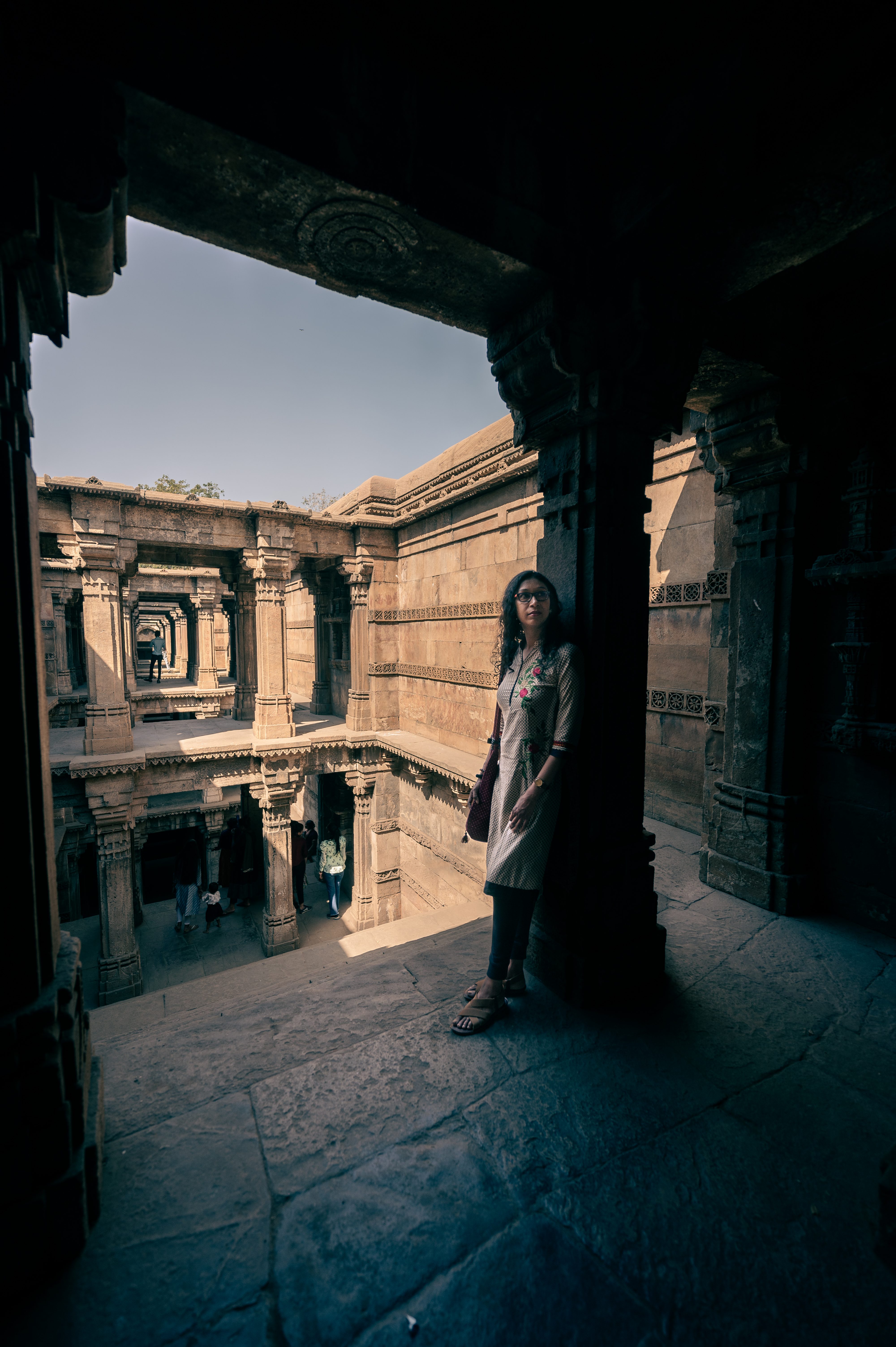
In-spite of being under State protection, Dai Halima Stepwell remains underrated and lacks the recognition it deserves. Dai is a midwife who looks after birthing mothers. One such midwife of the royal Bedga family was Dai Halima or Bai Harir Sultani who initiated the construction of this stepwell. Dai Halima stepwell is also known as Bai Harir ni Vav or Dada Harir Stepwell.
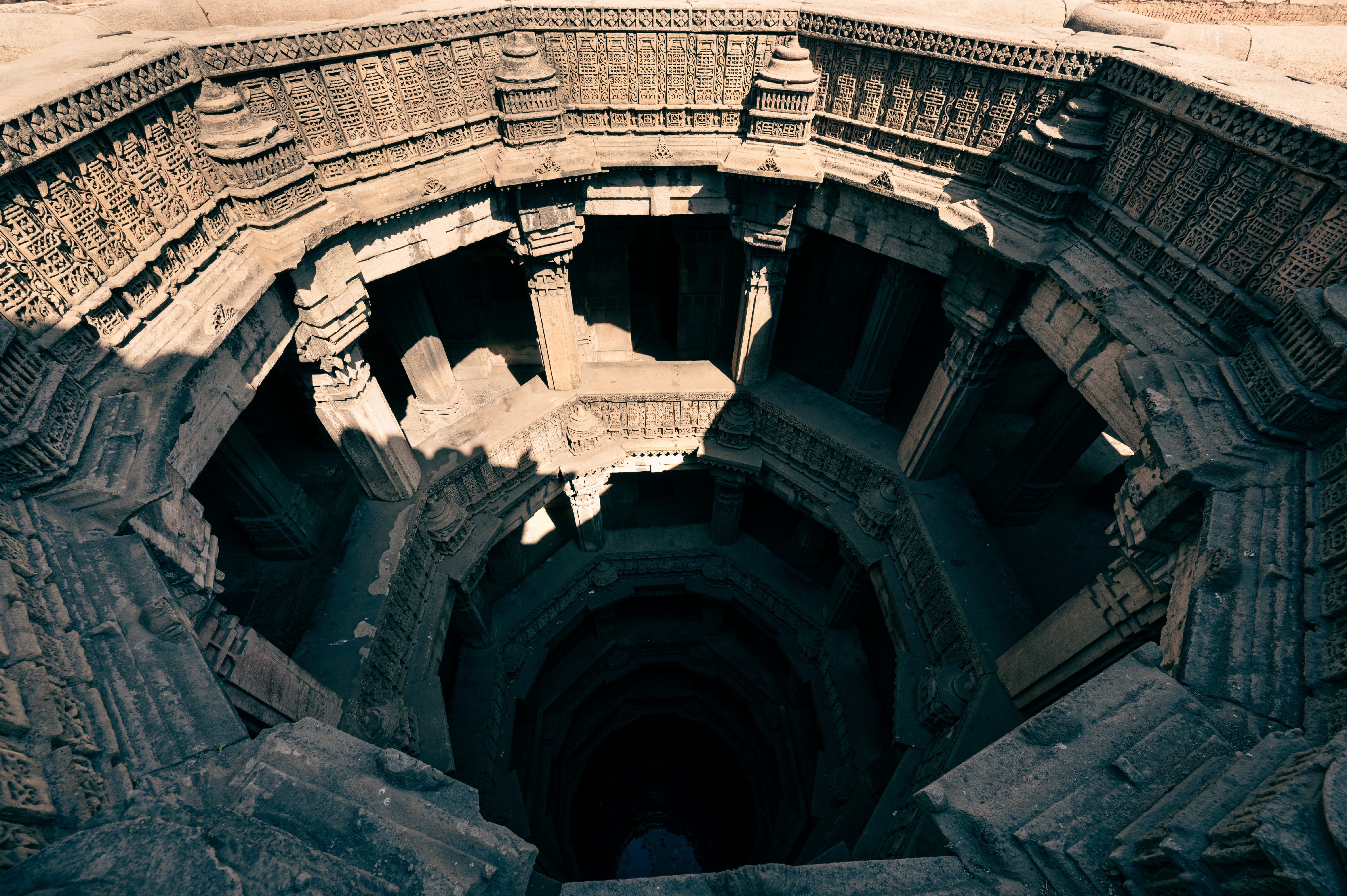
Built in 1499 along an east-west axis, the entrance of the stepwell is on the East. Another hidden entrance is on the west with two spiral staircases near the well. A square stepped floor with a funnel-like appearance at the bottom of the well extends to the lowest plane. This is a circle-shaped well. Carved columns, beams, walls, and arched openings above the square floor, lasts all the way to the top. The vertical chamber exposed to the sky is the top of the well.
Dai Halima stepwell is an epitome of beauty and smart architecture but in dire need of maintenance. In a state of neglect, the stepwell awaits restoration. Behind the vav is Dai Halima Mosque with burial of Dai Halima in the complex. Women can visit Dai Hamila’s burial but not the main mosque.
More about Dai Halima Stepwell
Where: 15 km from Ahmedabad center in old Ahmedabad near Haripura.
How to reach: It’s an easy walking distance in the old part of the city or else auto is the most reliable transport. We paid Rs 40 from Hutheesingh Jain Temple to Dai Halima.
Entry fee: None. (The caretaker of the mosque expressed his disappointment as the authorities had abandoned the entire complex into a state of disrepair. The local Muslim board pool in to maintain the mosque and the stepwell. So, if you visit Dai Halima, do make a small donation as a token of respect and a small contribution towards preserving heritage monuments)
In the end..
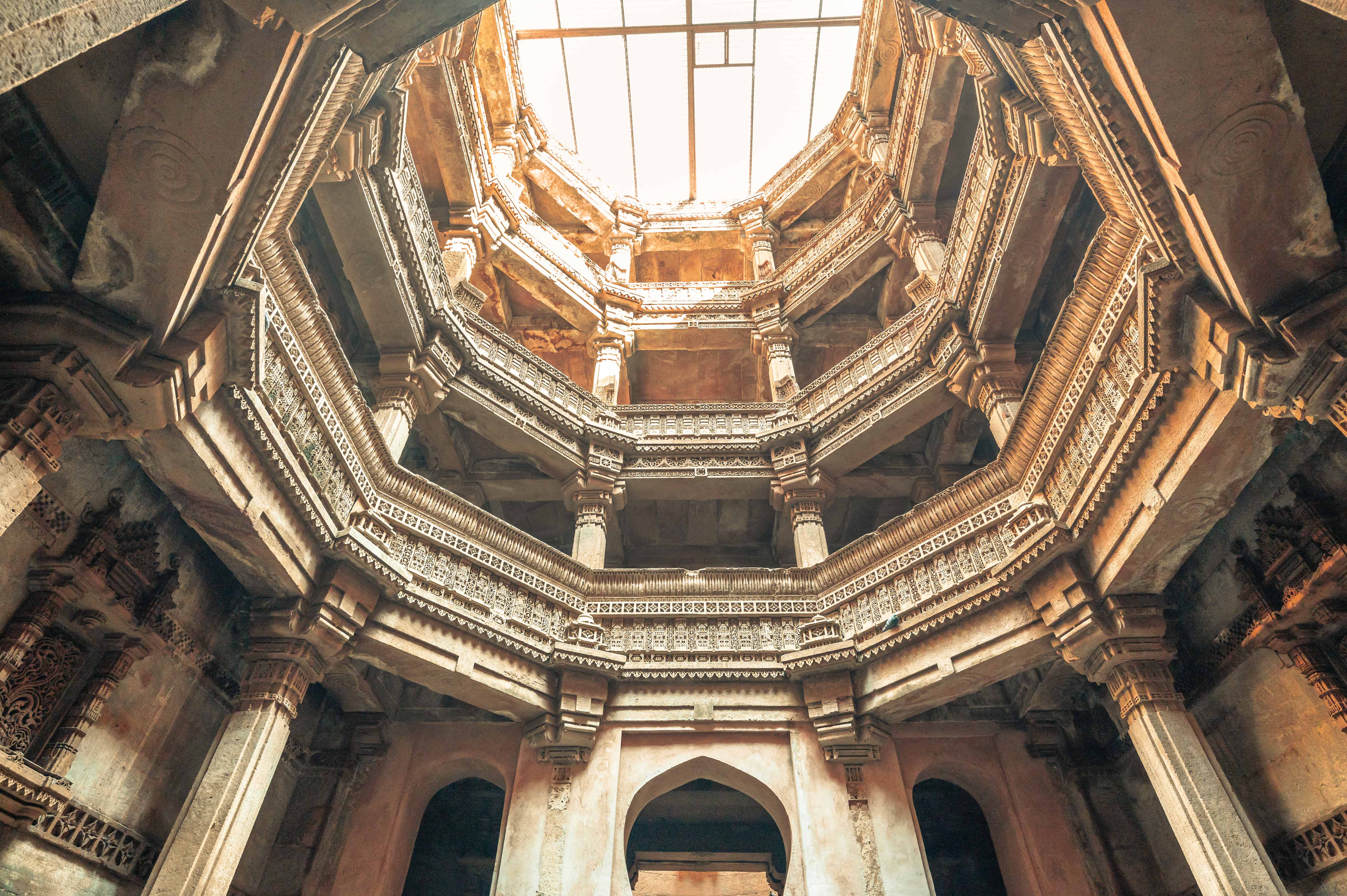
Gujarat has more than 200 stepwells and very few have been revived. The ones that are well-known are either under the ASI or state government protection. A state that had water crisis in the past made stepwells to tackle and problem. Due to hygiene issue and impracticality of storing water, the British had declared stepwells as obsolete. While the same is true, preserving these stepwells is our duty and responsibility. These icons of past are proof of brilliant technology and genius minds who designed and constructed these without the help of modern machinery. Do add these beautiful stepwells of Gujarat to your bucket list and let us know about your experience.

One thought on “3 must-Visit Stepwells of Gujarat”
Comments are closed.